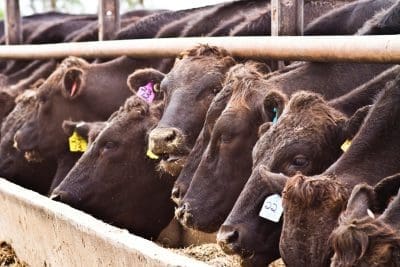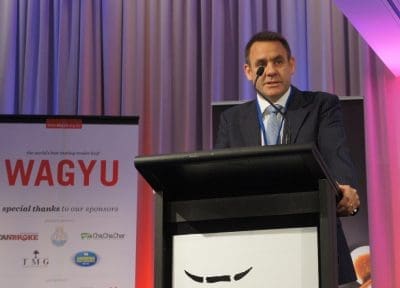WAGYU cattle numbers in Australia are growing at a faster rate than those of any other breed, according to figures released recently by the Australian Registered Cattle Breeders’ Association.
With 8463 new calves registered in 2015, Wagyu has climbed to sixth position in the breed hierarchy, up from eighth place in 2014 and twelfth place ten years ago.
 Wagyu’s calendar year 2015 registration figures were up 12pc on 2014, and continues a strong growth trend for the breed since it first appeared in ARCBA statistics in 1993 with 72 cattle registered.
Wagyu’s calendar year 2015 registration figures were up 12pc on 2014, and continues a strong growth trend for the breed since it first appeared in ARCBA statistics in 1993 with 72 cattle registered.
Membership growth of the Australian Wagyu Association has been even more dramatic, with a 39pc lift in member numbers in the 12 month period ended December 31, during which time 68pc of Australia’s beef breed organisations failed to increase membership numbers.
“Cattle producers are recognising the value of Wagyu membership which allows them to record their cattle and allows access to Wagyu’s innovative performance recording and genetic discovery programs which now contains carcase EBVs on more than 80,000 cattle,” AWA chief executive Graham Truscott said.
“Australia has taken an international leadership role in the performance recording of Wagyu cattle and the production of Wagyu beef. International demand for Australian Wagyu genetics and Wagyu beef produced by some of the nation’s largest pastoral and processing organisations will ensure the Wagyu growth continues,” Mr Truscott said.
The boom in registration numbers may be set to continue, as 95pc of the Wagyu calves registered in 2015 were in the primary register (Fullbloods and Purebreds). But AWA had just opened a secondary register called the Wagyu Content Register, which will add genetic diversity to the Australian Wagyu herd and could increase registrations and recordings by thousands a year.
At the 2016 Wagyu annual conference in the Hunter Valley in May, 400 delegates were told the 2011 joinings to Wagyu sires was 90,000, a jump of 24pc on 2014, and the AWA predicted 821,000 Wagyu joinings by 2020 when turnoff was likely to reach 276,000 head – representing about 74,000 tonnes of Wagyu beef, 90pc of which would be exported.
“We predict 4400 performance recorded Fullblood Wagyu bulls will be required each year to produce the calves to satisfy the demand for Australian Wagyu beef,” Mr Truscott told the conference.

MLA’s Richard Norton addresses the 2016 Wagyu conference
The question of market saturation was also raised at the conference and was put to MLA managing director Richard Norton who emphasised the importance of the positioning of premium quality beef.
Many of Australia’s end-markets were seeking a point of difference, Mr Norton said.
Based on Wagyu production as projected at the conference, he said Wagyu beef was not expected to saturate demand by 2020.
“The big emerging trend is that as incomes increase, consumers are more likely to expect greater taste and more enjoyment from eating beef and Wagyu clearly has a big role to play in that.”
“Strong brands that connect with consumers deliver premiums – consumers want a reason to spend greater dollars,” Mr Norton said.
